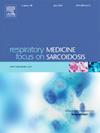Analysis and prediction of pathological risk factors for lung cancer by plasma metabolomics
IF 3.5
3区 医学
Q2 CARDIAC & CARDIOVASCULAR SYSTEMS
引用次数: 0
Abstract
Background
Common pathological risk factors for lung cancer include lymphovascular invasion (LVI), spread through air space (STAS) and perineural invasion (PNI). They are important factors that cause tumor recurrence after surgery, and also reference indices to determine the scope of surgical resection. At present, there is a lack of effective methods for preoperative judgment of the type and number of risk factors.
Methods
In this study, lung cancer was divided into three groups according to the number of pathological risk factors. Metabolites that can identify the number of risk factors were selected. Their differential diagnosis ability was evaluated by the area under ROC curve, sensitivity, specificity, Cohen's Kappa and F1 index.
Results
Among 160 lung cancer, 119 had no risk factors, 24 had one risk factor, and 17 had two or more risk factors. After the comparisons of these three groups with healthy volunteers, five metabolites with differential diagnosis ability were screened out. The indicators to assess their discriminative ability were satisfactory.
Conclusion
Metabolites discovered by metabolomics can identify the number of pathological risk factors associated with lung cancer. It is helpful to determine the extent of lung resection before surgery.
血浆代谢组学分析和预测肺癌病理危险因素。
背景:肺癌常见的病理危险因素包括淋巴血管浸润(LVI)、空气扩散(STAS)和神经周围浸润(PNI)。它们是导致术后肿瘤复发的重要因素,也是确定手术切除范围的参考指标。目前,对于术前危险因素的类型和数量的判断缺乏有效的方法。方法:本研究将肺癌按病理危险因素数量分为三组。选择了能够识别危险因素数量的代谢物。采用ROC曲线下面积、敏感性、特异性、Cohen’s Kappa和F1指数评价两组患者的鉴别诊断能力。结果:160例肺癌中,无危险因素119例,有1个危险因素24例,有2个及以上危险因素17例。通过与健康志愿者的比较,筛选出5种具有鉴别诊断能力的代谢物。评价其辨别力的各项指标均令人满意。结论:代谢组学发现的代谢物能够鉴别出与肺癌相关的多种病理危险因素。术前确定肺切除的范围是有帮助的。
本文章由计算机程序翻译,如有差异,请以英文原文为准。
求助全文
约1分钟内获得全文
求助全文
来源期刊

Respiratory medicine
医学-呼吸系统
CiteScore
7.50
自引率
0.00%
发文量
199
审稿时长
38 days
期刊介绍:
Respiratory Medicine is an internationally-renowned journal devoted to the rapid publication of clinically-relevant respiratory medicine research. It combines cutting-edge original research with state-of-the-art reviews dealing with all aspects of respiratory diseases and therapeutic interventions. Topics include adult and paediatric medicine, epidemiology, immunology and cell biology, physiology, occupational disorders, and the role of allergens and pollutants.
Respiratory Medicine is increasingly the journal of choice for publication of phased trial work, commenting on effectiveness, dosage and methods of action.
 求助内容:
求助内容: 应助结果提醒方式:
应助结果提醒方式:


